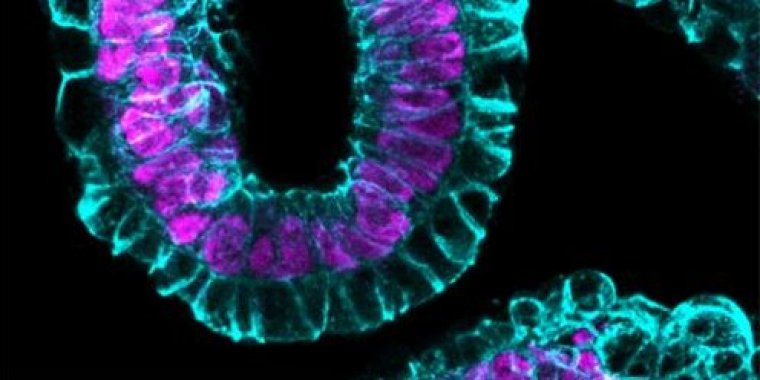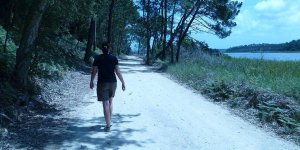| News / Science News |
Scientists generate key life event in artificial mouse ‘embryo’ created from stem cells
The team, led by Professor Magdalena Zernicka-Goetz at the University of Cambridge have developed the embryo-like structures, using three types of stem cells which let them reconstruct a process known as gastrulation, an essential step in which the embryonic cells being self-organising into the correct structure for an embryo to form.

Synthetic embryo like structure with embryonic part generated from the embryonic stem cells (pink) and and extra-embryonic tissues in blue. Image credit: Zernicka-Goetz lab/University of Cambridge
Once a mammalian egg has been fertilised by a sperm, it divides multiple times to generate a small, free-floating ball comprising three types of stem cells. At the stage of development known as the ‘blastocyst’ stage, the particular stem cells that will eventually make the future body – the embryonic stem cells (ESCs) – cluster together inside the embryo towards one end.
The other two types of stem cell in the blastocyst are the extra-embryonic trophoblast stem cells (TSCs), which will form the placenta, and primitive endoderm stem cells (PESCs) that will form the yolk sac, ensuring that the foetus’s organs develop properly and providing essential nutrients.
In March 2017, using a combination of genetically-modified mouse ESCs and TSCs, together with a 3D ‘jelly’ scaffold known as an extracellular matrix, the researchers were able to grow a structure capable of assembling itself and whose development and architecture very closely resembled the natural embryo.
There was a remarkable degree of communication between the two types of stem cell: in a sense, the cells were telling each other where in the embryo to place themselves.
However, a key step in the life of the embryo – gastrulation, described by the eminent biologist Lewis Wolpert as “truly the most important time in your life” – was missing.
Gastrulation is the point at which the embryo transforms from being a single layer to three layers: an inner layer (endoderm), middle layer (mesoderm) and outer layer (endoderm), determining which tissues or organs the cells will then develop into.
By adding the PESCs, the team was able to see their ‘embryo’ undergo gastrulation, organising itself into the three body layers that all animals have. The timing, architecture and patterns of gene activity reflected that of natural embryo development.
The researchers say they should now be in a position to better understand how the three stem cell types interact to enable the embryo to develop, by experimentally altering biological pathways in one cell type and seeing how this affects the behaviour of one, or both, of the other cell types. (University of Cambridge)
YOU MAY ALSO LIKE




